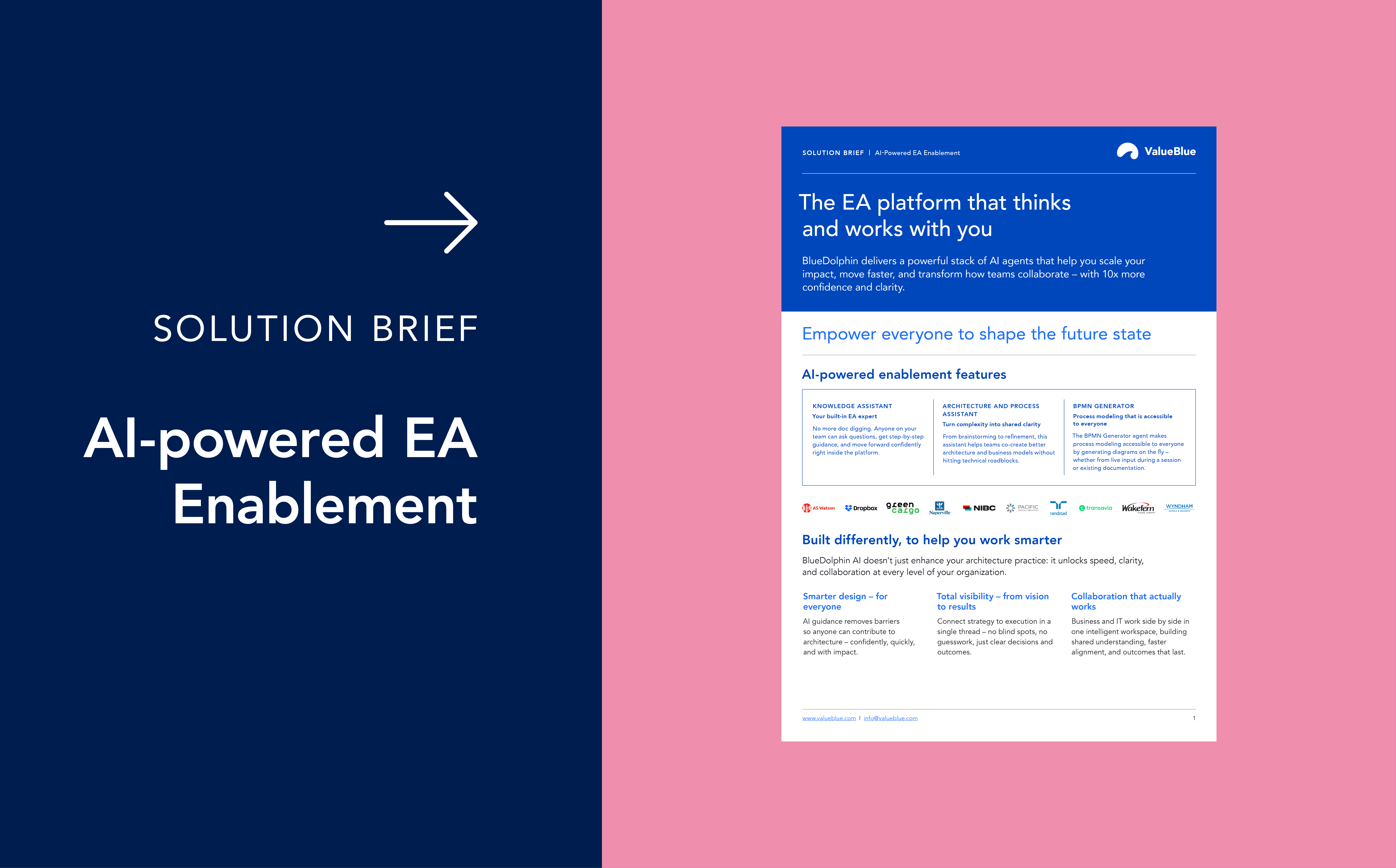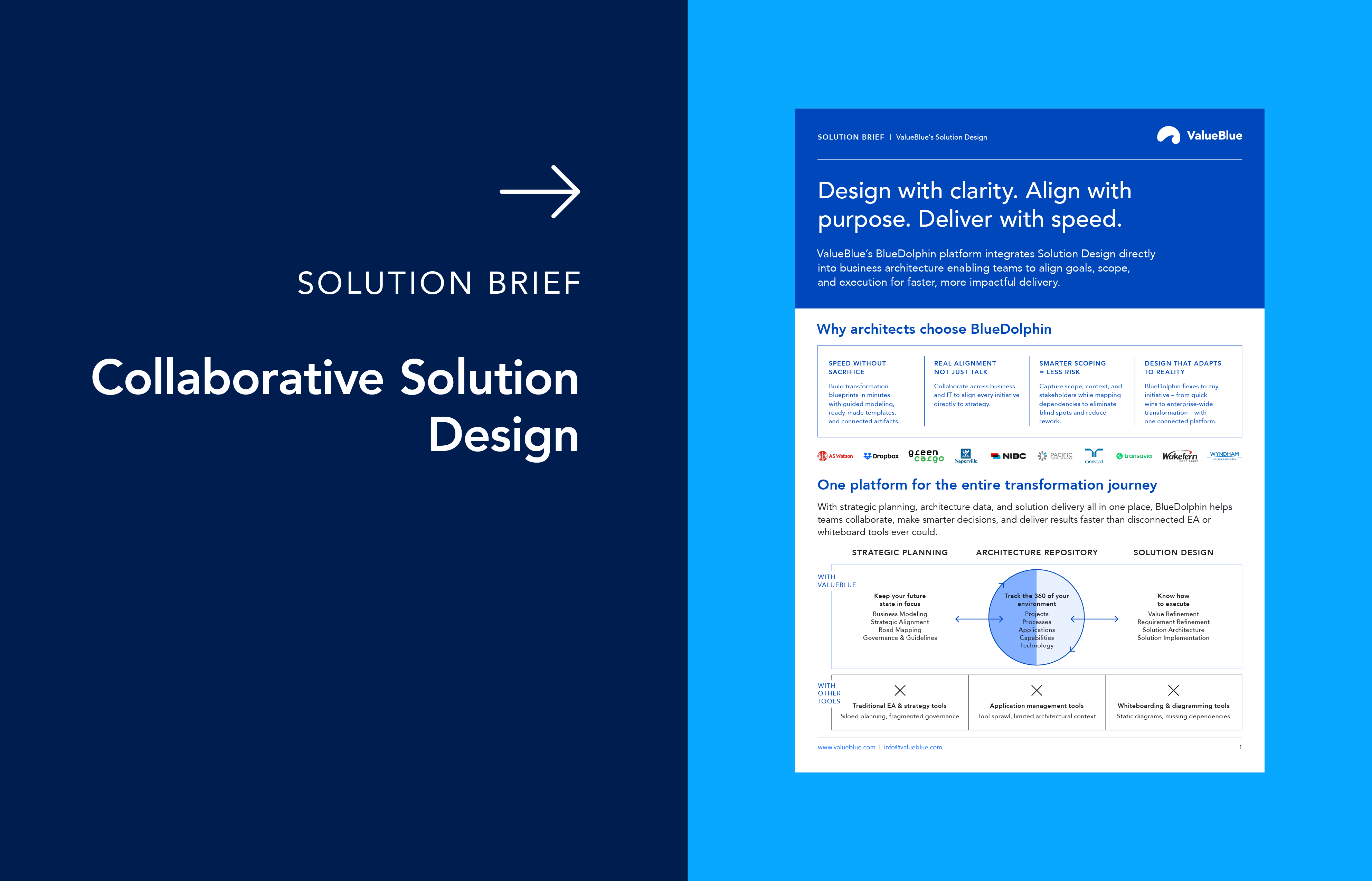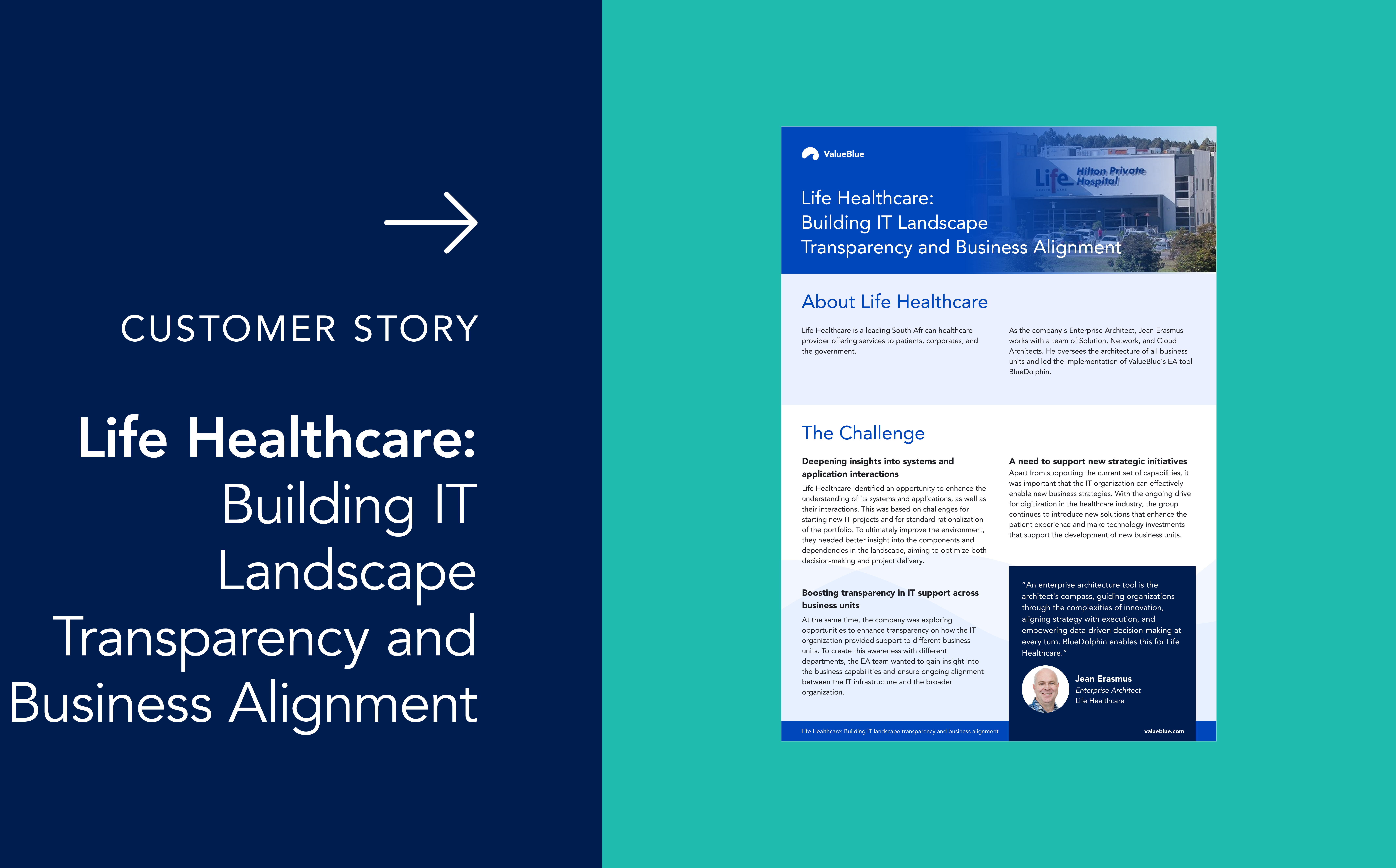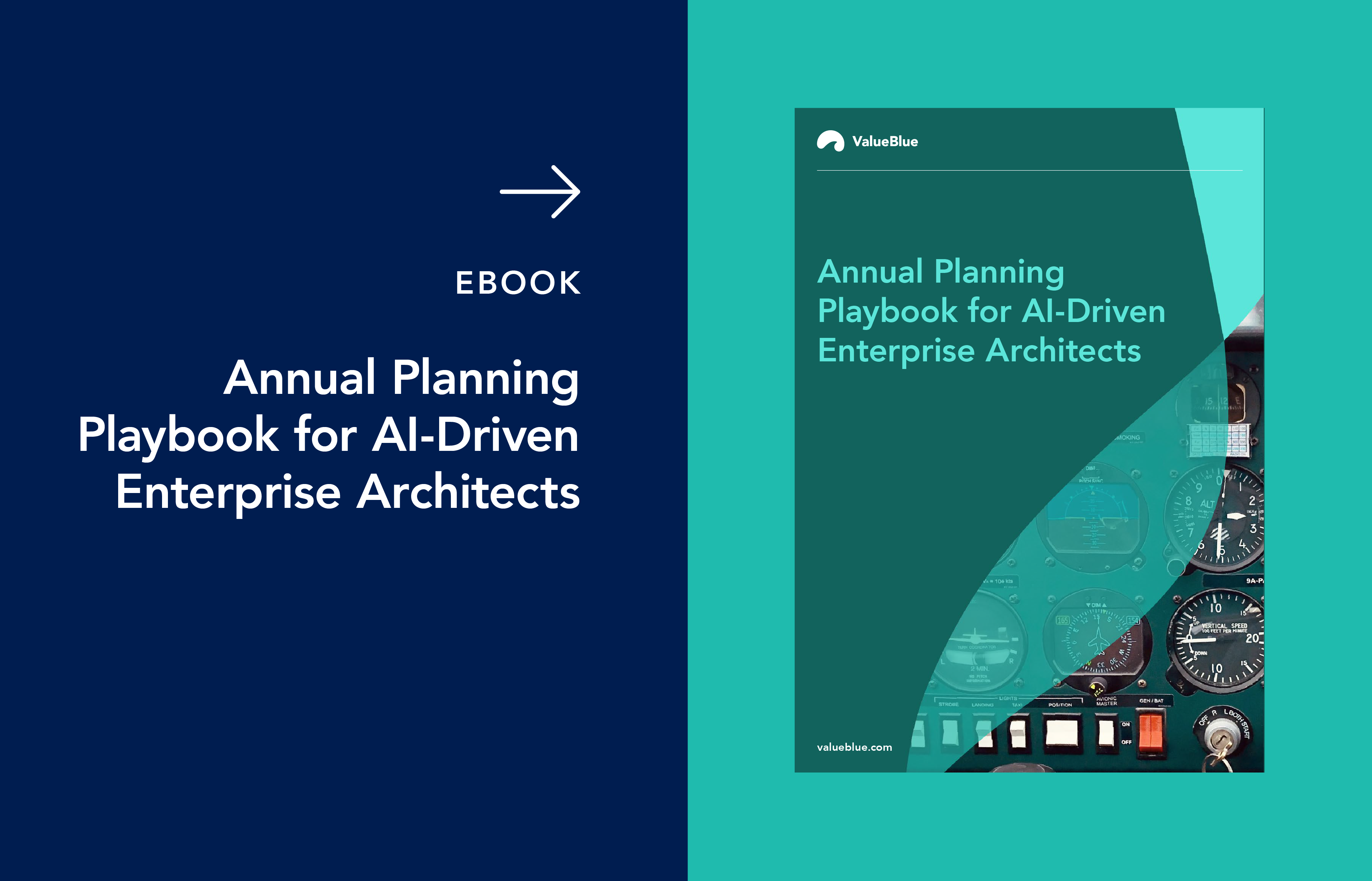The Role of AI in Enterprise Architecture: A Future Outlook
If you’ve spent time in Enterprise Architecture (EA), you know the sheer complexity and speed required to keep business and technology moving together. Yesterday’s architecture focused on laying the foundation. Today, AI has reshaped how we work – not only by automating tasks but also by changing the very rhythm of collaboration, analysis, and decision-making. It’s no longer about having smarter tools; it’s about unlocking smarter teams.
Organizations leveraging AI in Enterprise Architecture are sprinting ahead while their competitors struggle to keep pace. This is the real future of EA, happening now.
Why AI matters now in Enterprise Architecture
Imagine the traditional EA office: diagrams sprawled across screens, data tucked away in different formats and systems, teams emailing proposals back and forth, each with their own version of "truth". Everyone’s busy, but insights get buried, risks pop up after it’s too late, and shaping strategy can feel like pushing a boulder uphill.
Now picture the AI-powered alternative. Business and technology models are mapped and analyzed by automated algorithms. Machine learning spots connections that humans might miss, suggests what impacts the risks, and predicts which processes need rethinking. Instead of chasing information, architects start connecting dots and delivering value much faster.
This transformation isn’t about replacing people with machines – it’s about lifting the entire discipline of Enterprise Architecture to a new level. AI helps teams finally break free from bottlenecks and late-night manual reviews, showing what’s possible with intelligent collaboration.
How AI enhances Enterprise Architecture capabilities
AI promises to enhance several core EA capabilities:
Modeling
AI assistants help architects build more precise solution designs, reduce errors, and accelerate onboarding for both architects and non-architects. Machine learning analyzes existing diagrams and fills gaps, while generative AI recommends new solution patterns and models based on current data. AI can also detect inconsistencies and policy violations, recommend design improvements, and automatically compare scenarios for transformation projects.
Data clarity
AI translates complex architecture data into clear, digestible insights for both IT and business stakeholders. Using natural language processing, chatbots and assistants can answer questions in simple, everyday language. This makes architecture accessible and actionable for a wide range of users, not just technical specialists.
Data quality
AI uses image and pattern recognition to structure fragmented or unformatted data – whether pulled from sketches, spreadsheets, or multiple platforms. It benchmarks data against internal requirements and external best practices, recommending improvements and organizing data for up-to-date architecture management.
Reporting
Generative AI produces data visualizations, comprehensive reports, and executive summaries from large sets of architecture data. Beyond visualizing trends and models, it can surface latent insights about dependencies and opportunities – saving time and providing actionable guidance for strategic decisions.
Want to see how this works in practice? Book a short BlueDolphin demo.
Learn how AI can revolutionize your transformation initiatives.
What AI changes in Enterprise Architecture
Most EA programs still grapple with the same pain points:
- Documentation drags on and distracts from higher-value work.
- Key risks emerge after decisions have been made.
- Business and IT teams rarely see eye to eye when priorities compete.
- Recommendations take weeks to gather and review before anyone acts.
With AI at the core, everything begins to shift:
- Automation speeds up mapping and assessment so teams can focus on what matters.
- Analytics uncover patterns and bottlenecks in business and IT, revealing gaps in real time.
- Collaboration gets an upgrade with insights and visualizations shared instantly, helping everyone align around strategy.
- Scenario analysis becomes dynamic – you can tweak a model and watch forecasts adapt on the fly.
- Compliance stops being a fire drill because policy changes and risks are flagged before problems hit.
This is what evolution feels like: Enterprise Architecture with less friction, more momentum, and decisions driven by insight rather than endless reporting.
Seeing AI in action
It’s one thing to read about AI’s promise; it’s another to experience it. Successful EA teams don’t just use AI for one-off analyses. They put machine intelligence to work in everyday situations:
- Mapping and modeling: AI rapidly synthesizes what’s running, what’s outdated, and what overlaps. Instead of guessing, it highlights what needs attention in application portfolios and process designs.
- Building smarter roadmaps: Strategies and solution designs benefit from AI-driven predictions about bottlenecks, risk, and system integrations.
- Compliance and policy alignment: AI detects and flags policy violations, compares different scenarios, and ensures the architecture stays aligned with business objectives and regulatory requirements.
- Democratizing insights: With AI, business and IT teams have equal access to projections, priorities, and architecture context – creating true buy-in and organizational transparency.
- Reporting and recommendations: AI structures executive summaries, writes report sections, visualizes trends, and recommends improvements based on both internal benchmarks and external analyst data.
What’s next for Enterprise Architecture teams? Rethinking the discipline
AI won’t magically fix every challenge. To truly benefit, Enterprise Architecture teams need a mindset shift – seeing themselves as partners to AI, not just users.
- Invest in adaptive platforms: The best EA tools will keep getting smarter, using AI for modeling, visualization, and dynamic planning.
- Stay curious: The next wave of AI advances will come quickly. Enterprise Architecture professionals should keep learning, adapting, and sharing best practices industry-wide.
- Connect strategy with technology: AI excels when mapped to actual business priorities, capabilities, and goals.
The future of Enterprise Architecture is about continuous learning, agile planning, and frameworks that flex as the business evolves. AI powers teams to move faster and more confidently.
Making AI work for you in Enterprise Architecture
It’s easy to get swept up in the promise of AI, but the basics still matter:
- Keep data clean and organized. AI is only as powerful as the inputs it receives.
- Define the outcomes you want. Whether it’s improved cycle time, fewer escalations, or stronger compliance, set clear goals for your AI Enterprise Architecture program.
- Never lose sight of the human factor. AI delivers options; people drive change.
With these fundamentals in place, even big hurdles – change fatigue, data overload, misunderstood strategy – become manageable.
Looking ahead: Enterprise Architecture’s intelligent future
AI and EA are forming a new partnership for change. The immediate future will involve smarter impact analysis, ongoing risk evaluation, and business strategy that adapts in real time – not quarterly. The organizations that thrive will be those merging intelligent platforms with collaboration, learning, and action.
As you evolve your Enterprise Architecture program, ask: Am I just mapping what exists, or am I shaping what comes next? With AI as your engine, possibilities open up.
Key takeaways
- AI is changing Enterprise Architecture by automating analysis, improving data quality, speeding up collaboration, and helping teams adapt faster.
- The best results combine smart technology with human expertise, business context, and clear priorities.
- Continuous learning and curiosity shape how far AI and EA can go together – making transformation a habit, not a headache.
Want to unlock the power of AI in Enterprise Architecture for your business? Download our eBook "AI & Enterprise Architecture: Maximizing Business Benefits 2025".
FAQ
How does AI support Enterprise Architecture?
AI helps architects automate modeling, spot risks, and plan changes more accurately – reducing manual effort and improving impact.
What are the biggest benefits of AI in Enterprise Architecture?
Speed, actionable insights, enhanced data clarity and quality, smarter reporting, risk management, cross-team collaboration, and measurable compliance.
Are there challenges to the use of AI in Enterprise Architecture?
Yes: maintaining data quality, embracing culture change, and learning to pair AI’s guidance with expert judgment.
What’s the future of AI in Enterprise Architecture?
Architecture will become more adaptive, real-time, and deeply integrated with business strategy, powered by smart platforms and continuous learning.
Book a demo
Want to discover how our tool can further enhance your Enterprise Architecture? Fill in the form!
Not ready for a demo yet?
Let’s discuss how BlueDolphin fits your organization’s needs.





